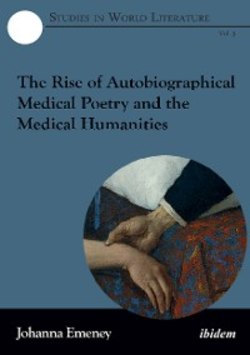Читать книгу The Rise of Autobiographical Medical Poetry and the Medical Humanities - Johanna Emeney - Страница 6
The Medical Humanities
ОглавлениеThe growth of resources in the area of the medical humanities4 runs parallel to the increase in medical humanities and narrative medicine programmes at universities and other institutions—first in the United States, then in the United Kingdom, Canada and, more recently, in Australia and New Zealand. According to some scholars, the humanities were incorporated into medical training as a countermeasure to “the emergence of seemingly miraculous but morally troubling medical and technological advances” of the 1970s (Jones, Wear and Friedman 2014, 1). To others, the narrowness of the “new criticism” dominating the literature curriculum drove many educators to seek out the socio-political, cross-curricular opportunities offered by the study of literature and medicine. Kathryn Montgomery Hunter (1991), Professor of Medicine, Medical Ethics and Humanities at Northwestern University Medical School, explains this view in greater detail:
Much as medical ethics was occupied with the patient-physician relationship, literary criticism was occupied with the intricacies of the reader-writer dyad, a terminal formalism that excluded social issues. Literary scholars interested in the social contexts of literature, in history or culture, in the author’s relation to the text, or in the work’s political force or societal reception were intellectually underemployed, even if they held academic positions. In the late 1970s and early 1980s, the field of literature and medicine put a spin on customary teaching by opening up interesting questions about literature and culture, literature and the lives of human beings. (5)
At present, thriving medical humanities programmes are taught in tertiary institutions all over the world and have been referred to as “part of the mainstream in medical education” in North America and in the United Kingdom since 2005 (Gordon 6). In 2003, the journal Academic Medicine reported that there were over 40 medical humanities programmes internationally (Gordon 2005, 6), including those in countries such as Hong Kong, India, Nepal, Israel, Qatar, The Netherlands, Switzerland and Australia. In 2015, Great Britain had more than 12 universities with the medical humanities on their curricula, and “most undergraduate medical programmes offer[ed] either mandatory or optional courses in one or more humanities subjects at some point in the degree” (Jack 2015, n.p.).
With regard to New Zealand, the country’s two medical schools now make humanities subjects compulsory. Since 1996, Otago University’s students have had to choose one option from 18 humanities “Selectives” which run for six weeks from April to mid-May in their third year. An expert humanities tutor in each “selective” takes the students for six two-hour sessions over this period.
As of 2017, students in their first year may also choose one extra humanities paper from 20 options, and use the marks from this extra paper towards their final aggregate mark to decide their placement for the next year. This new initiative rewards the students’ extra effort to explore topics outside the purely biomedical and to foster their critical thinking skills. Options include: “An Engagement with Poetry or Fiction”, “Healing and Death in the Ancient World”, “Introductions to Buddhist Thought”, “The Graphic Narrative”, “Myth in French Film”, “The Politics of Health”, and “Modern Irish Drama”.
In addition to Otago University’s medical school and its resources for the medical humanities, the Corpus website was founded in May 2016, by University of Otago historian Barbara Brookes and poet Sue Wootton, as a forum for the creative and reflective discussion of disability, illness, health and medical practice.
A comprehensive medical humanities course also exists in Auckland. The Auckland University Medical School (now The Faculty of Medical and Health Sciences) [FMHS] introduced the humanities into their curriculum in 2000, an interfaculty committee having been set up to implement this in 1995 (Grant 2013, 1072). In the comparative literature topic of the FMHS’s course, third-year students are encouraged to read and write medically relevant poetry and prose in order to perceive the place of narrative and metaphor in their future profession. The FMHS’s course blends concepts from Rita Charon’s “pioneering Program in Narrative Medicine at Columbia University” (Thernstrom 2004, 44), with its focus on co-constructed doctor-patient narratives, and the commensurately important study of image or metaphor in writing by doctors and patients.5
It is no coincidence that the medical story-telling courses taught at Columbia, Harvard and Pennsylvania State universities, and the feasibility of increasing the number of such courses taught in his home country, were the subject of New Zealand doctor-poet Glenn Colquhoun’s 2010 Fulbright scholarship research (Yeats 2009, 6).
Having explored the relationship between writing and medical practice extensively in his 2002 collection Playing God, Colquhoun then chose to study beside recognised leaders in medical humanities teaching, such as the poet and physician Rafael Campo, whose creative reading and writing programme for medical students at Harvard seeks to redress “the occasional disconnect between medical facts and human truths” (Brown and Woodruff 2014, n.p.).
